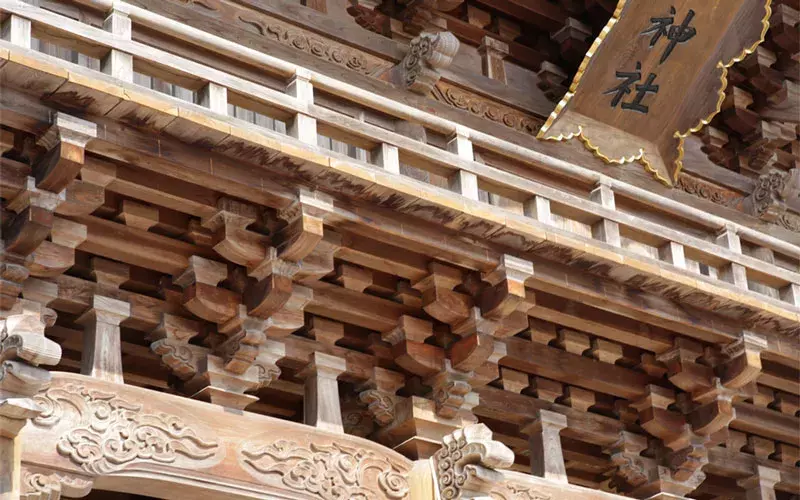
Since ancient times, the Japanese forests have shaped the land and its people, culture, and spirituality. Not surprisingly, the country’s architects have relied on wood as a primary building material, used in constructing everything from humble dwellings to refined teahouses to awe-inspiring temples and shrines – and since trees still cover 70% of the Japanese archipelago, wood crafts have long been an essential and central art. As explored in the JAPAN HOUSE Los Angeles exhibit “Masters of Carpentry: Melding Forest, Skill and Spirit,” the deep traditions of Japanese carpentry are carried on today by dedicated artisans (known as daiku) who embody not only a knowledge of craft but a reverence for the forest itself. The link between nature and spirituality is perhaps best illustrated in the work of the dōmiya daiku, or shrine and temple carpenters, whose role directly connects the material world of wood to the spiritual realm.
Architectural Heritage
The dōmiya daiku are the keepers of an architectural heritage that spans over a millennium. The temples and shrines they construct, restore, and maintain are more than mere buildings; they are spiritual hubs that are central to Japan’s religious and cultural identity. Prior to the entry of Buddhism from India via China and Korea in the 6th century CE, the Japanese revered the natural world in an animistic spirituality later known as Shinto. In this indigenous belief system, kami or nature spirits, inhabit trees, mountains, rivers, and other aspects of nature and are responsible for natural phenomena including rain, storms, fires, and typhoons. After Buddhism’s arrival, the two faiths interwove in complex ways over the coming centuries and gave rise to two distinctive typologies of religious architecture: Buddhist temples and Shinto shrines.
Temples and Shrines
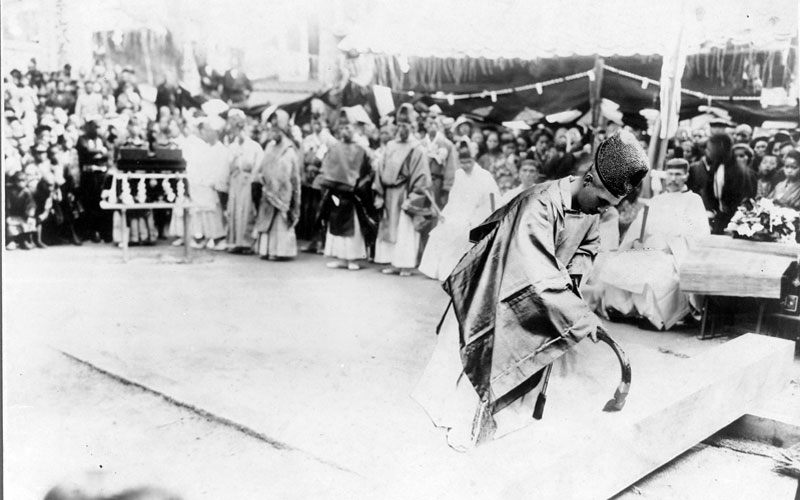
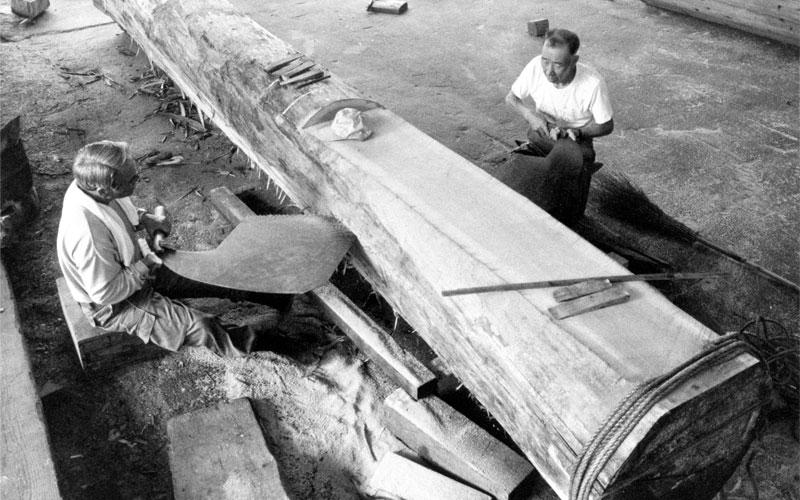
Temples, associated with Buddhism, are places where people practice Buddhist rituals, honor ancestors, and seek spiritual and philosophical guidance. They typically consist of main worship halls containing images of the Buddha and other deities, tall pagodas housing sacred relics, and elaborate bell towers. Shinto shrines, on the other hand, are dedicated to particular kami, who are honored and worshipped but rarely depicted as deities, since the spirits themselves cannot be seen. Shrines are marked by iconic torii gates, often red, which demarcate the entrance to sacred ground inhabited by kami. Both types of architecture are created primarily from wood, and have involved the craftsmanship of dōmiya daiku in their construction and maintenance over the centuries.
Throughout its history, traditional carpentry in Japan has been characterized by a symbiotic relationship with the environment, both for practical and spiritual reasons. Carpenters prioritized careful stewardship of the forest to ensure it would remain a bountiful natural resource, honoring the kami of the trees and mountains through respect and ritual and carefully selecting just the right wood for specific projects. Trees are thus chosen not only for their physical properties, but with an understanding of their spirit and the role they play in the forest ecosystem. Sourcing wood harmoniously with the natural environment involves sustainable forestry practices, long-term planning, and consideration of the longevity and maintenance of particular structures.
Sustainability and Environmental Harmony
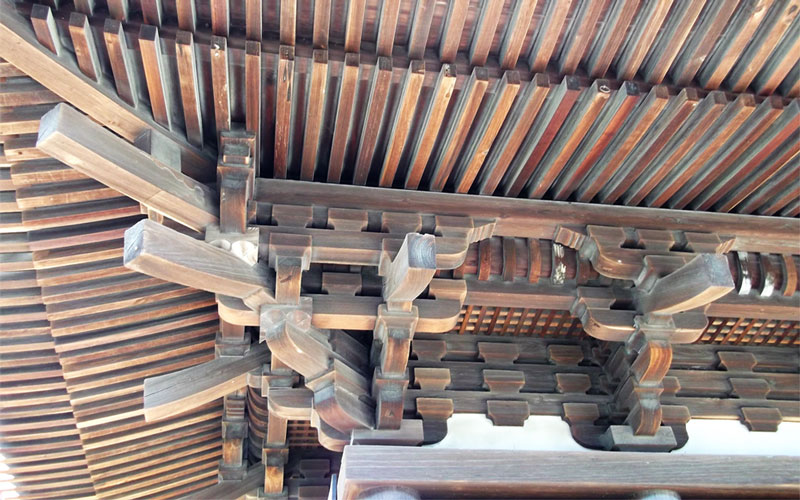
This ethos of sustainability and environmental harmony applies to all wood crafts but takes on even more significance in the construction of temple and shrines, which are often located in natural settings or near water and are designed to blend seamlessly with their surroundings and honor the deities present there. The respect for nature is exemplified not only through their choice of materials, but the techniques used by dōmiya daiku as well. For instance, wood used in structures is often left in its raw state, allowing the grain and texture to remain visible and highlight its inherent beauty. The use of kigumi (traditional joinery techniques), where wooden pieces are intricately fitted together without the use of nails, reflects the spiritual principle of purity and respect for the materials. This method symbolizes the interconnectedness of all things – a key concept in both Shinto and Buddhism. The absence of nails, which can be seen as a form of violence against the wood, allows the structure to be built in a way that also shows care and preservation for the integrity of the natural materials.
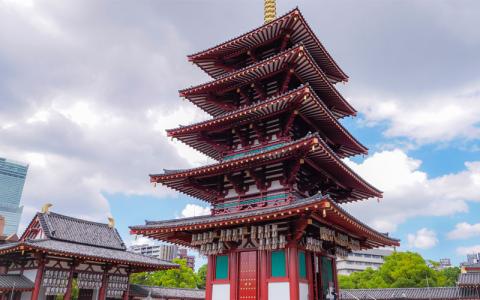
Over the centuries, dōmiya daiku innovated hundreds of ways to connect wood in meticulous interlocking joints without any nails or metal studs, influenced by these aesthetic and spiritual concerns. The practice also served as a strategy to cope with a lack of suitable metal as a resource and as a response to Japan’s earthquake-prone environment. When earthquakes occur, a building with rigid joints might suffer extreme damage, whereas timber-only joints can flex and move to survive the shaking. In a notable example, when the Great Hanshin earthquake struck Kobe in 1995 with devastating impact on the Kansai region, the Yakushiji temple in nearby Nara emerged unscathed. In fact, it had survived many earthquakes since its construction in the 7th century (to get a glimpse of some of the next-level carpentry for which Yakushiji temple is famous, don’t miss a recreated section of its hip-and-gable roof in the “Masters of Carpentry” exhibition). These joinery techniques also allowed dōmiya daiku to accomplish impressive feats of engineering that were unique for their time, like the sweeping, multi-tiered roofs of temples like Kiyomizu-dera in Kyoto, which utilizes complex wood bracketing systems (known as tokyō) to support massive tile-covered surfaces without any internal pillars.
Generations of Dōmiya Daiku
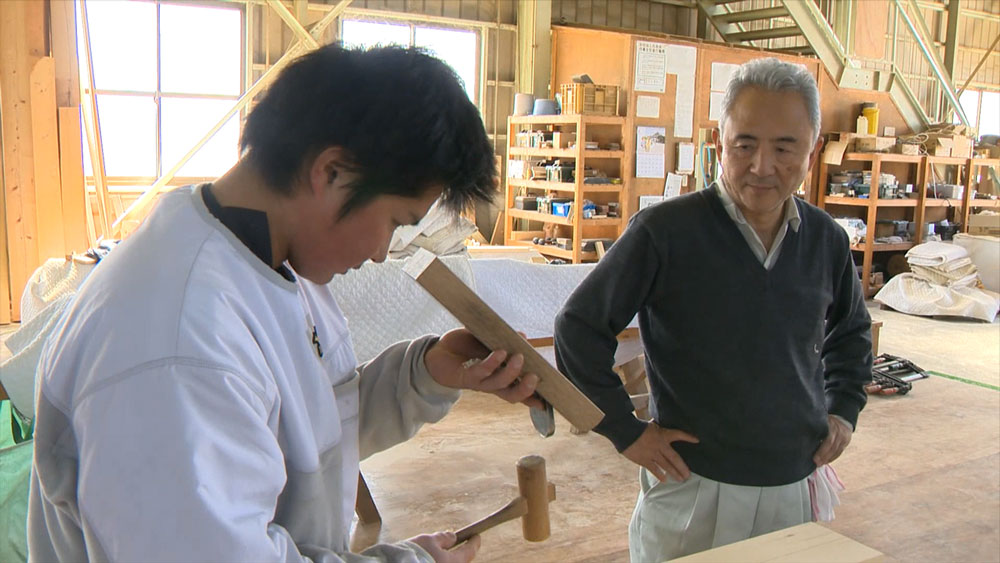 Still from “Master Carpenter: The World of Temple and Shrine Carpenters” video
Still from “Master Carpenter: The World of Temple and Shrine Carpenters” video
So how did the dōmiya daiku learn such advanced skills? Like master artisans of most disciplines in Japan, from ceramics to sake-brewing, this craft has been passed down through generations in a rigorous apprenticeship, in which masters train apprentices, or deshi, that can take decades (to learn more about deshi, read an article exploring the concept relating to an exhibition of bamboo artist Tanabe Chikuunsai IV). Aspiring carpenters often begin their journey in their teens, living with and spending years observing and assisting master craftsmen before being entrusted with more complex tasks. This system ensures the transmission not just of technical skills, but of the philosophy and spirit of dōmiya daiku. Central to this tradition is the use of hand tools, many of which have remained largely unchanged for centuries. The razor-sharp steel edge of a Japanese hand plane (called a kanna) in the hands of a skilled carpenter can achieve results that rival or surpass modern power tools. As quoted by a dōmiya daiku in a video featured in the exhibition, “if you can't make sharp tools, you can't do honest work.” Moreover, tools are believed to embody the spirit and dedication of their owner, acting as more than just physical instruments but as extensions of the carpenter's soul.
When today’s dōmiya daiku embark on repairing or restoring ancient temples and shrines, they describe the process as a sort of collaboration with the original carpenters – however many centuries have passed. They emphasize that their craft is not passed down through written instructions, drawings, or verbal teachings. Instead, they are embedded within the very structures themselves, as each generation of carpenters infuses their work with personal conviction and spirit. Contemporary carpenters must interpret the techniques and ideals of the past by interacting directly with the materials, while also innovating to adapt to the current moment.
Mindfulness

This deep reverence is shown in the daily work of dōmiya daiku past and present. Before commencing their day’s work, these craftsmen often participate in purification rituals, cleansing both body and spirit. Every chisel stroke, every joint placement, is performed with mindfulness and intention, turning the act of building into a spiritual practice. This intense focus on the materials can be seen as a form of mindfulness, and this meditative aspect of woodworking shares much in common with the practice of shinrin-yoku, or forest bathing. Both involve a sensory immersion in the natural world, fostering a state of calm awareness. The rhythmic sound of a hand plane smoothing a board, the scent of freshly cut wood, the tactile sensation of grain under fingertips – all contribute to a state of flow that many carpenters describe as deeply mindful (to learn more about shinrin-yoku, watch a previous webinar available online, and an article delving into the practice).
Architecture Preservation
As in other countries, the 20th century saw contemporary construction techniques gain prominence throughout Japan for most urban dwellings, workplaces, and other structures. And like many traditional crafts, the art of the daiku faces certain challenges today, due not only to fewer apprentices following in the masters’ footsteps, but also considerable economic and climate pressures. However, in the realm of spiritual architecture, it is inspiring that the work of dōmiya daiku is still seen as essential to Japan's cultural heritage. This type of knowledge and practical skill is the accumulation of centuries of knowledge and experience and should be preserved and supported in whatever ways possible.
In another example of sacred architecture thousands of miles away, we have recently been reminded of the importance of ancient woodworking techniques. The Cathedral of Notre Dame in Paris, France, is currently being rebuilt after a catastrophic fire. Because knowledge of centuries-old carpentry techniques was required to restore the cathedral’s oak framework, an international team of woodworkers was assembled. Among them was American carpenter Hank Silver, who has described this project as a “once in a millennium” opportunity to showcase the importance of traditional wood crafts to the world. In Japan, the ongoing lineage of shrine and temple carpentry directly demonstrates the beauty and meaning of this irreplaceable craft on a daily. In every temple and shrine, in every chisel mark on wood or delicately flexing timber joint, the spiritual and practical art of the dōmiya daiku lives and breathes – a timeless craft that will continue to shape Japan’s cultural landscape for generations to come.

